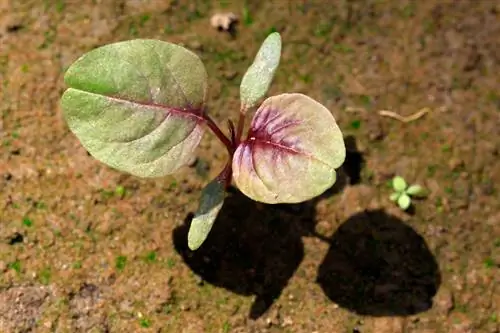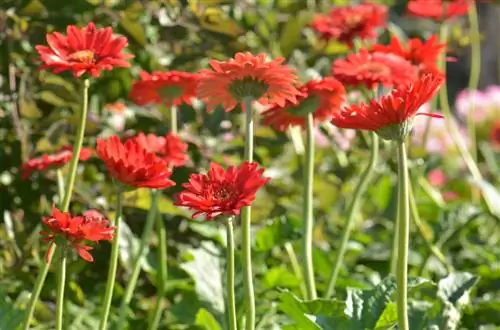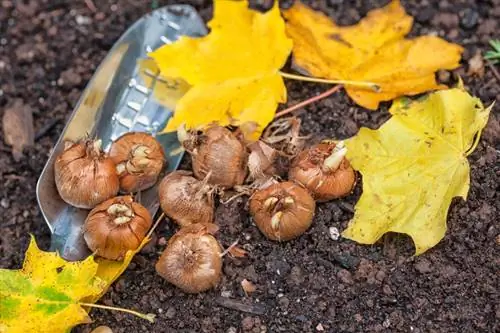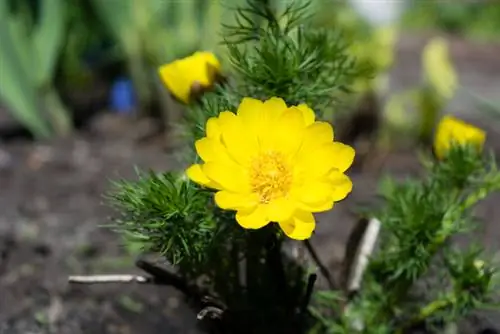- Author admin [email protected].
- Public 2023-12-16 16:46.
- Last modified 2025-01-23 11:20.
Amaranth, also known as foxtail, impresses not only with its edible plant parts, but also with its colorful, tinsel-like inflorescences. In this country it can be cultivated as an annual. But what should you consider when growing?
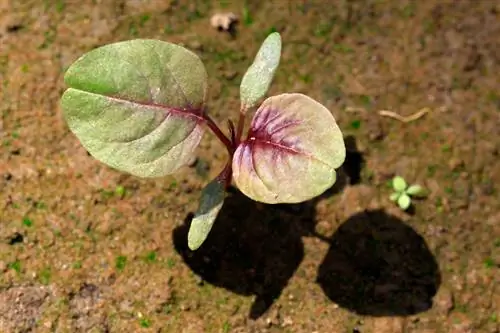
How to plant amaranth correctly?
Amaranth requires a sunny to partially shaded, wind-protected location and deep, loose, permeable, nutritious soil. Sow seeds directly into the bed from mid-May or bring them home from March. Harvest time is between the beginning of September and mid-October.
Which location is suitable for amaranth?
The amaranth likes a full sun location best. But it can also thrive in partial shade. In addition to lots of light, it is important to have a place that is protected from the wind. This satisfies this plant's need for warmth. Last but not least, the location should be more dry than wet.
What requirements does the pseudocereal place on the soil?
Before you plant the amaranth, you can enrich the soil with a portion of compost or manure. Simply rake the fertilizer roughly into the ground. The soil or substrate should have the following characteristics:
- profound
- easy
- permeable
- nutritious
When and how do you sow the seeds?
The seeds can simply be sown directly into the bed from mid-May (frost-sensitive plant). Take a handful of seeds and throw them onto the surface. The seeds are then lightly raked under. Now it is important that the soil is kept moderately moist so that germination can take place without any problems.
Pre-culture is also possible. You can start doing this as early as March. It is recommended that you prefer to stay at home until June. Sowing later is not advisable as the shortened time until autumn means the seeds cannot mature properly. Sow the seeds 1 to 2 cm deep!
When does amaranth bloom?
After the amaranth has been separated to around 30 cm after sowing and expiring, it goes into its flowering period from around July. The flowering of this pseudo-cereal can last until September.
When is harvest time?
You can harvest individual amaranth leaves as needed even before the seeds ripen. They can be prepared like spinach. The seeds are harvested when fully ripe. This is usually the case between the beginning of September and mid-October. The fully ripe fruit stalks are cut off and hung up to dry.
Next to which other plants does amaranth look good?
The foxtail also looks good as an ornamental plant because of its flowers and fruit heads. The large-growing varieties are more suitable as solitary plants. Small-growing varieties appear expressively alongside daisies, lobelias and silver leaves.
What else should you consider?
Here are a few important tips for the time after sowing:
- only plant outdoors from mid-May
- Install a support for tall varieties
- young plants are susceptible to snail damage
- Promote stability: pile up the trunk with soil
- mulch the soil in full sun locations
Tip
Since amaranth crosses easily, you should only grow one variety per year!

